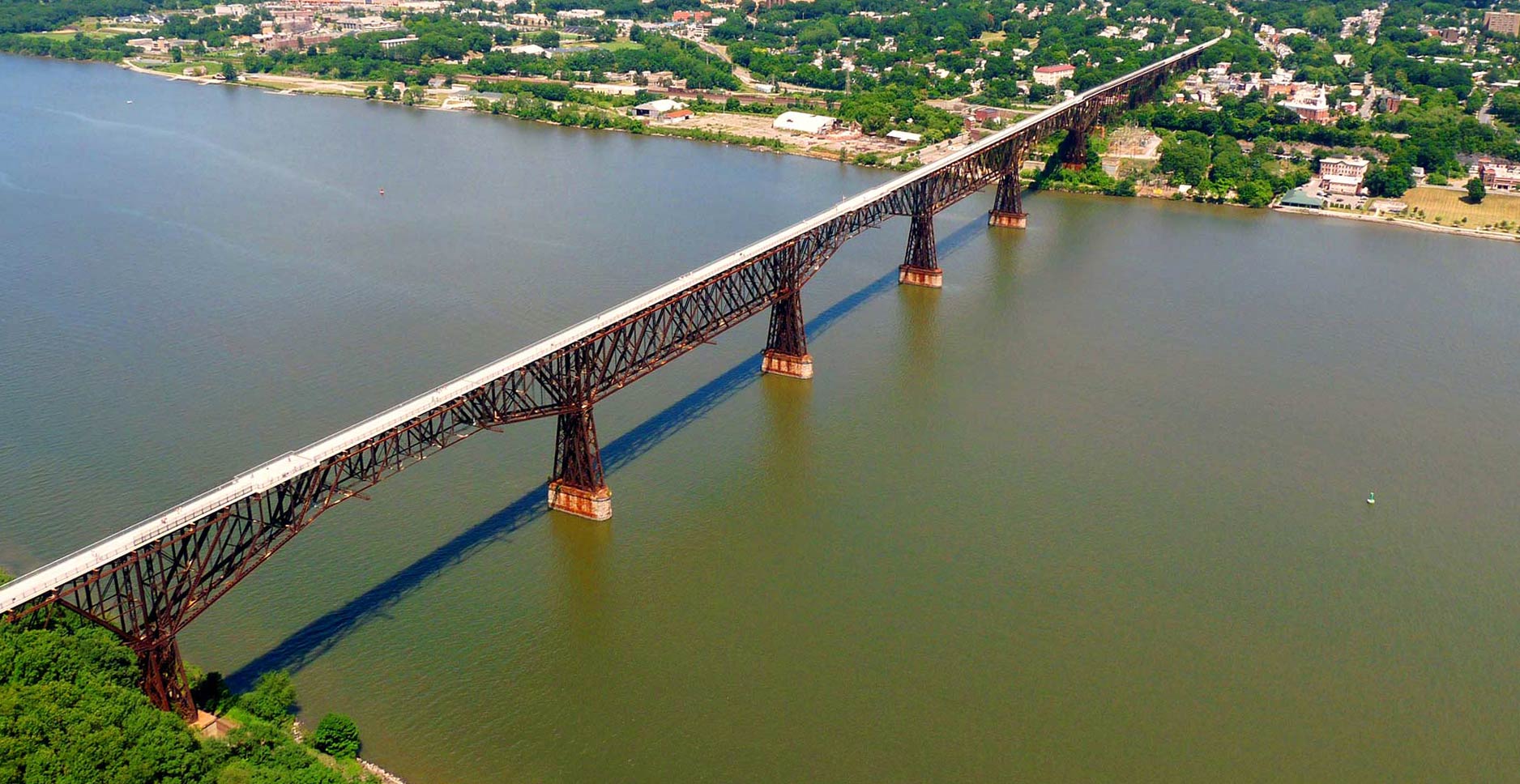Environmental Monitoring
Hudson River Environmental Conditions Observing System (HRECOS)
The LED display on the Walkway shows conditions in the Hudson River as it flows under your feet. An instrument adjacent to Marist College campus gathers data on depth, temperature, clarity, acidity, salt and oxygen in the river every 15 minutes and these values are sent to the display via radio signal. All of these conditions change over time, such as the height of the water which will vary by about 4 feet between high and low tide. Some other attributes of the water in the Hudson are less predictable. The turbidity, or clarity, of the water will change quite dramatically with time of year, stage of tide, and time since the last storm event. Dissolved oxygen is affected by both water temperature and biological activity in the river. Cold water holds more oxygen than does warm water and so values will tend to be higher in the winter, lower in the summer. Plants in the river produce oxygen and you might see changes from day to night as these plants exert their effects on the amount of oxygen in the water.
These observations are one way that scientists and managers keep an eye on what is happening in the Hudson to understand how the ecosystem works. This site on the Walkway and at Marist are part of a network of sensors spread throughout the Hudson and the Mohawk Rivers. Observations from other sites and further information can be found at www.hrecos.org.

Walkway Audio Tour
Walkway Past, Present, and Future
- Welcome
- Signal Tower
- 3000 Men
- American Bald Eagle
- First Photographer's Story
- Double Crested Cormorant
- Henry Hudson
- Intercollegiate Regatta
- Rapid Transit
- Whaling
- Engineering Feat
- Vassar Brewery
- The Walkway Vision
- Clearwater
- Sloops
- Ring-Billed Gulls
- Sturgeon
- Environmental Monitoring
- American Eel
- A Firefighter's Story
- Benches
- Bronze Medallions
- Dutchess County
- Little Italy
- Fall Kill
- Catskill Mountains
- Upper Landing Park
Other Nearby Historic Sites
State Sites: Mansions
- Introduction
- Philipse Manor Hall
- John Jay Homestead
- Bannerman's Island
- Staatsburgh
- Clermont
- Olana
- Schuyler Mansion
State Sites: Military
- Introduction
- Schuyler Mansion
- Fort Montgomery
- Senate House
- Clermont
- Stony Point Battlefield
- Knox's Headquarters
- New Windsor Cantonment
- Washington's Headquarters
Local National Sites
Other Local Sites






